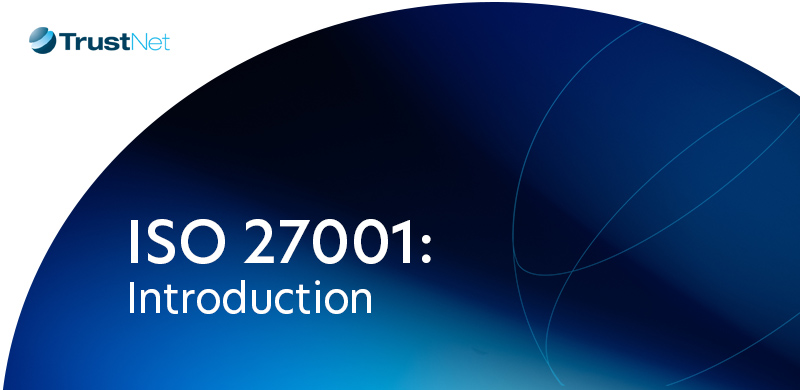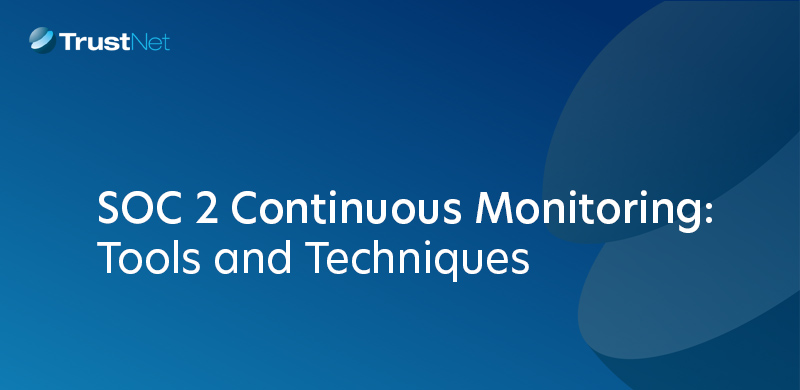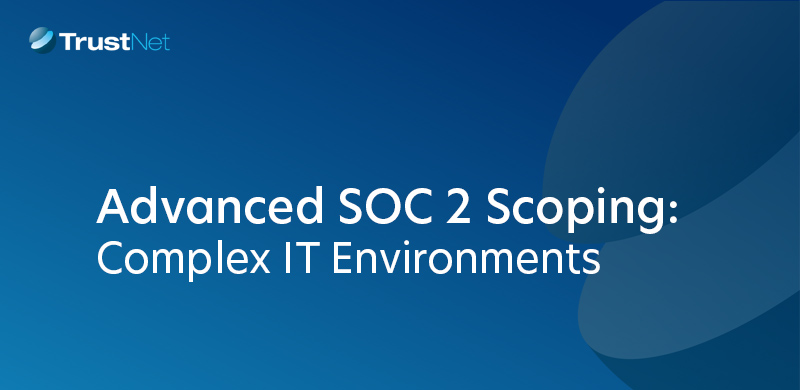Blog Mastering Compliance: A Framework for Managing Risk and Third-Party Relationships
Mastering Compliance: A Framework for Managing Risk and Third-Party Relationships

In today’s intricate regulatory landscape, mastering compliance is paramount for businesses striving to maintain integrity and avoid legal pitfalls. Compliance frameworks and industry standards serve as the backbone for organizations to develop robust security compliance management systems. These frameworks not only guide companies in adhering to legal requirements but also offer risk management strategy examples crucial for navigating potential threats.
A pivotal aspect of this landscape is a third-party risk management policy, which addresses the vulnerabilities introduced by external partnerships. By incorporating data governance metrics, businesses can ensure comprehensive oversight and enhance their overall compliance strategy, safeguarding their operations and reputation.
Understanding Compliance Frameworks and Industry Standards
Compliance frameworks provide a systematic approach to managing compliance, ensuring that organizations have a clear path to follow. They help businesses identify risks, implement controls, and maintain ongoing compliance with relevant laws. By offering a structured methodology, these frameworks enable companies to minimize potential legal risks and enhance operational efficiency.
Common Compliance Frameworks:
ISO 27001: Focuses on information security management, providing a framework for establishing, implementing, maintaining, and continually improving an information security management system.
Benefits:
-
- Risk Management: Identifies potential security threats and vulnerabilities, enabling businesses to implement effective controls.
- Enhanced Trust: Certification boosts company credibility and demonstrates a commitment to data protection.
- Operational Efficiency: Streamlines processes through systematic risk assessment and management.
NIST Cybersecurity Framework: Offers guidelines to manage and reduce cybersecurity risks, widely adopted in various sectors to enhance cybersecurity practices.
Benefits:
-
- Customizable Framework: Offers flexibility, making it applicable to diverse industries and business sizes.
- Increased Resilience: Promotes proactive identification and mitigation of potential threats.
- Improved Communication: Enhances communication of cybersecurity risks and strategies within an organization.
GDPR (General Data Protection Regulation): A critical regulation for businesses operating in or with the European Union, GDPR sets the standard for data protection and privacy.
Benefits:
-
- Data Privacy: Bolsters individuals’ rights over their personal data.
- Transparency Requirements: Mandates clear communication about data processing activities.
- Legal Compliance: Helps avoid substantial fines and legal complications due to non-compliance.
CCPA (California Consumer Privacy Act): Provides guidelines for data privacy rights and consumer protection for residents of California, emphasizing transparency and accountability in data handling.
Benefits:
-
- Enhanced Consumer Rights: Provides consumers the right to access, delete, and opt-out of data selling.
- Boosted Reputation: Shows a commitment to privacy, fostering brand loyalty.
- Competitive Edge: Distinguishes businesses by prioritizing customer privacy.
Industry Standards Supporting Compliance:
Industry standards are crucial in shaping compliance practices within specific sectors. They provide additional layers of guidance to ensure that businesses not only meet regulatory requirements but also adhere to best practices.
PCI DSS (Payment Card Industry Data Security Standard): Ensures that all companies that accept, process, store, or transmit credit card information maintain a secure environment.
Benefits:
-
- Fraud Reduction: Minimizes the risk of data breaches and fraud through rigorous security requirements.
- Customer Assurance: Builds customer trust by demonstrating robust data protection measures.
- Standardized Processes: Establishes consistent procedures for securely managing payment data.
HIPAA (Health Insurance Portability and Accountability Act): Sets the standard for protecting sensitive patient data in the healthcare industry.
Benefits:
-
- Data Security: Maintains the confidentiality, integrity, and availability of patient information.
- Assured Compliance: Avoids penalties by ensuring adherence to healthcare regulations.
- Patient Confidence: Strengthens patient trust regarding the security of their personal health information.
By leveraging these frameworks and standards, organizations can build robust compliance programs that not only meet regulatory demands but also foster trust and credibility with clients, partners, and stakeholders.
For more on our comprehensive compliance services, Request a Quote today
The Intersection of Compliance and Third-Party Risk
As organizations increasingly rely on external partners and vendors to expand their capabilities and market reach, they also expose themselves to a range of potential risks that can significantly impact their compliance posture.
The Growing Importance of Third-Party Risk Management:
Third-party relationships can introduce vulnerabilities that, if not properly managed, may lead to compliance breaches, financial loss, or reputational damage. Therefore, integrating a robust third-party risk management strategy is crucial for safeguarding an organization’s compliance efforts.
Impact on Compliance Posture:
When third-party risks are not adequately addressed, they can compromise an organization’s ability to comply with industry regulations and standards. For example, a vendor’s failure to adhere to data protection laws can lead to significant legal repercussions for the contracting organization.
As such, businesses must ensure that their partners are aligned with their compliance requirements to maintain a strong regulatory standing.
Key Elements of a Third-Party Risk Management Program:
To effectively manage these risks, organizations should develop comprehensive third-party risk management programs that include:
- Risk Assessment: Conduct thorough evaluations of third-party vendors to identify potential risks before entering into agreements.
- Due Diligence: Implement a structured process to evaluate the compliance and operational integrity of potential partners.
- Contractual Safeguards: Ensure that contracts with third parties include clauses that address compliance obligations and risk mitigation measures. These may include:
-
-
- Data Protection Clauses: Specify data security requirements, including encryption standards and breach notification timelines.
- Liability and Indemnity Clauses: Clearly outline responsibilities and liabilities in cases of non-compliance or data breaches.
- Performance Metrics: Define key performance indicators (KPIs) and reporting obligations to ensure compliance and quality.
- Termination Clauses: Include conditions under which the agreement can be terminated to protect the organization from ongoing risk exposure.
- Audit Rights: Ensure contracts grant the right to conduct audits of the third party’s operations and security measures.
-
-
- Ongoing Monitoring: Regularly review and monitor third-party activities to ensure continued compliance and address any emerging risks.
Examples of Third-Party Risk Assessment Methodologies:
-
- Questionnaires and Surveys: Use structured questionnaires to gather information about third-party compliance practices and risk exposure.
- On-Site Audits: Conduct physical audits of third-party facilities to verify compliance with contractual and regulatory requirements.
- Automated Risk Monitoring Tools: Utilize technology solutions to continuously monitor third-party activities and flag potential compliance issues in real-time.
- Risk Scoring Systems: Develop a system that assigns scores to vendors based on their risk levels, which aids in prioritizing oversight and resource allocation.
- Scenario Analysis: Engage in hypothetical scenario analyses to evaluate potential impacts of various risk events involving third parties.
- Background Checks: Perform thorough checks on financial stability, legal history, and industry reputation of third-party vendors to ensure reliability and compliance.
- Compliance Verification: Examine certifications and licenses to confirm that third parties meet industry and regulatory standards.
- Reputation Analysis: Collect insights through market research and feedback from current clients to assess the reliability and performance of vendors.
Developing a Comprehensive Compliance and Risk Management Strategy
A comprehensive strategy considers all facets of risk and compliance, focusing on the interconnectedness of different regulatory requirements and the organization’s operations. This approach helps in identifying potential gaps and overlaps, reducing redundancy, and enhancing overall efficiency.
Steps to Develop a Risk Management Strategy:
1. Risk Identification:
- Actions: Conduct a thorough analysis of both the internal and external environments. This involves gathering data from various sources such as industry reports, historical data, and internal audits.
- Considerations: Use tools like SWOT analyses (Strengths, Weaknesses, Opportunities, Threats) and PESTLE analyses (Political, Economic, Social, Technological, Legal, Environmental) to identify potential risks.
- Tools: Leverage risk management software that integrates data from multiple sources to provide a comprehensive overview.
2. Risk Assessment:
- Actions: Evaluate the identified risks to understand their likelihood and potential impact on the organization. This helps prioritize risks that require immediate attention.
- Methods: Utilize quantitative methods such as risk matrices and heat maps to visualize and prioritize risks based on severity and frequency.
- Considerations: Ensure that assessments are aligned with the organization’s risk appetite and tolerance levels.
3. Risk Mitigation:
- Actions: Develop strategies to minimize or eliminate identified risks. This may involve implementing internal controls, diversifying supply chains, or adopting new technologies.
- Examples: Establishing robust cybersecurity protocols, implementing employee training programs, and securing necessary insurance policies to transfer certain risks.
- Considerations: Evaluate the cost-benefit ratio of each mitigation strategy to ensure resource optimization.
4. Implementation:
- Actions: Roll out the risk management plan across the organization, ensuring all stakeholders are informed and trained in their specific roles.
- Best Practices: Develop clear communication channels to facilitate understanding and engagement. Assign responsibilities clearly and establish accountability measures.
- Considerations: Use project management tools to track the implementation process and maintain oversight of progress and compliance.
5. Monitoring and Review:
- Actions: Continuously monitor changes in the risk environment and assess the effectiveness of the current strategy.
- Techniques: Implement key performance indicators (KPIs) and regular audits to evaluate the strategy’s success and areas for improvement.
- Considerations: Stay informed on regulatory changes and industry trends that might affect the risk profile. Regularly update the strategy to reflect these changes and maintain relevance.
Integrating Compliance Frameworks and Industry Standards:
To ensure a robust compliance posture, it’s essential to integrate relevant frameworks and standards into your risk management strategy. This involves:
-
- Aligning Processes: Ensure that organizational processes are aligned with the guidelines set by frameworks such as ISO 27001 or NIST.
- Training and Awareness: Educate employees and partners about compliance requirements and the importance of adhering to industry standards.
- Regular Audits: Conduct regular compliance audits to verify that practices meet regulatory standards and identify areas for improvement.
Role of Data Governance in Managing Compliance Risk:
Data governance plays a crucial role in managing compliance risk by establishing policies and procedures for data management. Key elements include:
Data Quality Management:
- Data Validation: Implement automated validation processes to verify data accuracy at the point of entry. This can include setting up rules in data entry systems that check for errors, such as format inconsistencies or missing fields, before data is accepted into the system.
- Data Cleansing: Regularly perform data cleansing activities to remove or correct inaccurate records. Techniques such as deduplication and standardization help maintain data integrity, ensuring that datasets are accurate and reliable for decision-making and regulatory reporting.
Access Controls:
- Role-Based Access Control (RBAC): Assign access permissions based on user roles within the organization. This limits data access to only those individuals who need it for their job functions, reducing the risk of unauthorized data exposure. For example, only finance department staff may have access to financial databases.
- Multi-Factor Authentication (MFA): Enhance security by requiring users to provide two or more verification factors to gain access to systems or data. This could include a combination of something the user knows (password), something the user has (security token), and something the user is (biometrics), adding an extra layer of security against unauthorized access.
Compliance Monitoring:
- Utilize data governance metrics and dashboards to continuously monitor compliance with data protection regulations such as GDPR and CCPA. Implement tools that track data access logs, audit trails, and user activities to ensure compliance and identify potential breaches or policy violations promptly.
Talk to our experts today!
Measuring Compliance and Risk Performance
Key performance indicators (KPIs) serve as essential tools for evaluating the effectiveness of compliance frameworks and industry standards, thereby enabling organizations to make informed, data-driven decisions.
Key Performance Indicators for Compliance and Risk Management:
KPIs help in identifying areas of strength and pinpointing potential vulnerabilities that need addressing.
Importance of Data-Driven Decision-Making:
Leveraging data allows organizations to move beyond assumptions and make decisions based on empirical evidence. This approach enhances the precision of risk assessments and the effectiveness of compliance strategies.
Examples of Compliance and Risk Metrics:
Compliance Metrics:
-
- Number of Compliance Audits Completed: Tracks the frequency and thoroughness of internal and external audits.
- Incident Resolution Time: Measures the average time taken to resolve compliance violations.
- Compliance Training Completion Rates: Tracks the percentage of employees who have completed mandatory compliance training within a specified timeframe.
- Regulatory Fines and Penalties: Monitors the financial penalties incurred due to non-compliance with regulations.
- Policy Violation Frequency: Measures the number of times company policies are breached over a given period.
- Audit Findings Resolution Rate: Evaluates the percentage of audit findings that have been resolved within a given period.
Risk Metrics:
-
- Risk Exposure Levels: Assesses the potential impact of identified risks on the organization.
- Control Effectiveness Ratings: Evaluates how well current controls are mitigating identified risks.
- Risk Mitigation Progress: Assesses the progress made in implementing risk mitigation strategies.
- Incident Frequency Rates: Measures the rate at which risk incidents occur over a specified timeframe.
- Severity of Loss Events: Tracks the financial and operational impact of risk events.
- Control Testing Frequency: Monitors how often risk controls are tested for effectiveness.
Using Metrics to Inform Continuous Improvement:
Metrics are not just for assessment; they serve as a foundation for continuous improvement. Organizations can use these insights to refine their security compliance management processes and reinforce their risk management strategies. By regularly reviewing data governance metrics, organizations can ensure their compliance efforts remain robust and relevant.
The Future of Compliance and Risk Management
As organizations navigate an increasingly complex regulatory landscape, the future of compliance and risk management is being shaped by technological advancements, particularly in artificial intelligence (AI) and machine learning (ML).
— AI and ML Applications in Compliance:
-
- Automating Routine Tasks: AI and ML are streamlining compliance by automating repetitive and time-consuming tasks such as data entry, document sorting, and report generation. This automation not only reduces human error but also frees up valuable resources for strategic decision-making.
- Enhancing Data Analysis: With the ability to process and analyze vast amounts of data quickly, AI and ML provide deeper insights into compliance data. These technologies identify patterns and anomalies that might go unnoticed, allowing organizations to preemptively address compliance issues and optimize processes.
- Improving Risk Prediction: AI-powered predictive analytics can assess potential risks by analyzing historical data and current trends. Machine learning algorithms continuously learn and adapt, enhancing their ability to predict risks and recommend proactive measures to mitigate them.
— Additional Benefits:
-
- Real-Time Monitoring: AI systems can offer real-time monitoring of compliance metrics, alerting organizations to deviations from regulatory standards instantly. This enables timely interventions and maintains compliance integrity.
- Cost Efficiency: Implementing AI and ML in compliance processes can significantly reduce costs associated with compliance management. By minimizing manual intervention and enhancing process efficiency, organizations can achieve substantial savings.
- Customization and Scalability: AI and ML solutions can be tailored to fit specific industry requirements, and they scale effectively as organizations grow, ensuring that compliance systems remain robust and relevant.
Building a Resilient Future through Strategic Compliance and Risk Management
A robust compliance and risk management framework is the cornerstone of any organization’s long-term success. By addressing potential risks and ensuring adherence to regulatory standards, businesses can safeguard their operations and reputation in an ever-evolving landscape.
To remain agile, continuous monitoring and adaptation are essential. Leveraging the expertise of experts like TrustNet helps organizations navigate the complexities of compliance with confidence.
Partner with TrustNet and transform compliance challenges into opportunities for lasting success. Contact Our Experts today.




